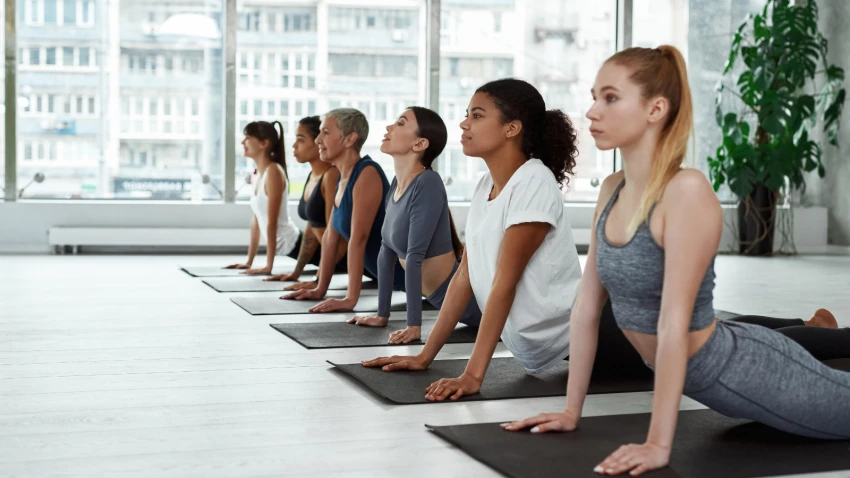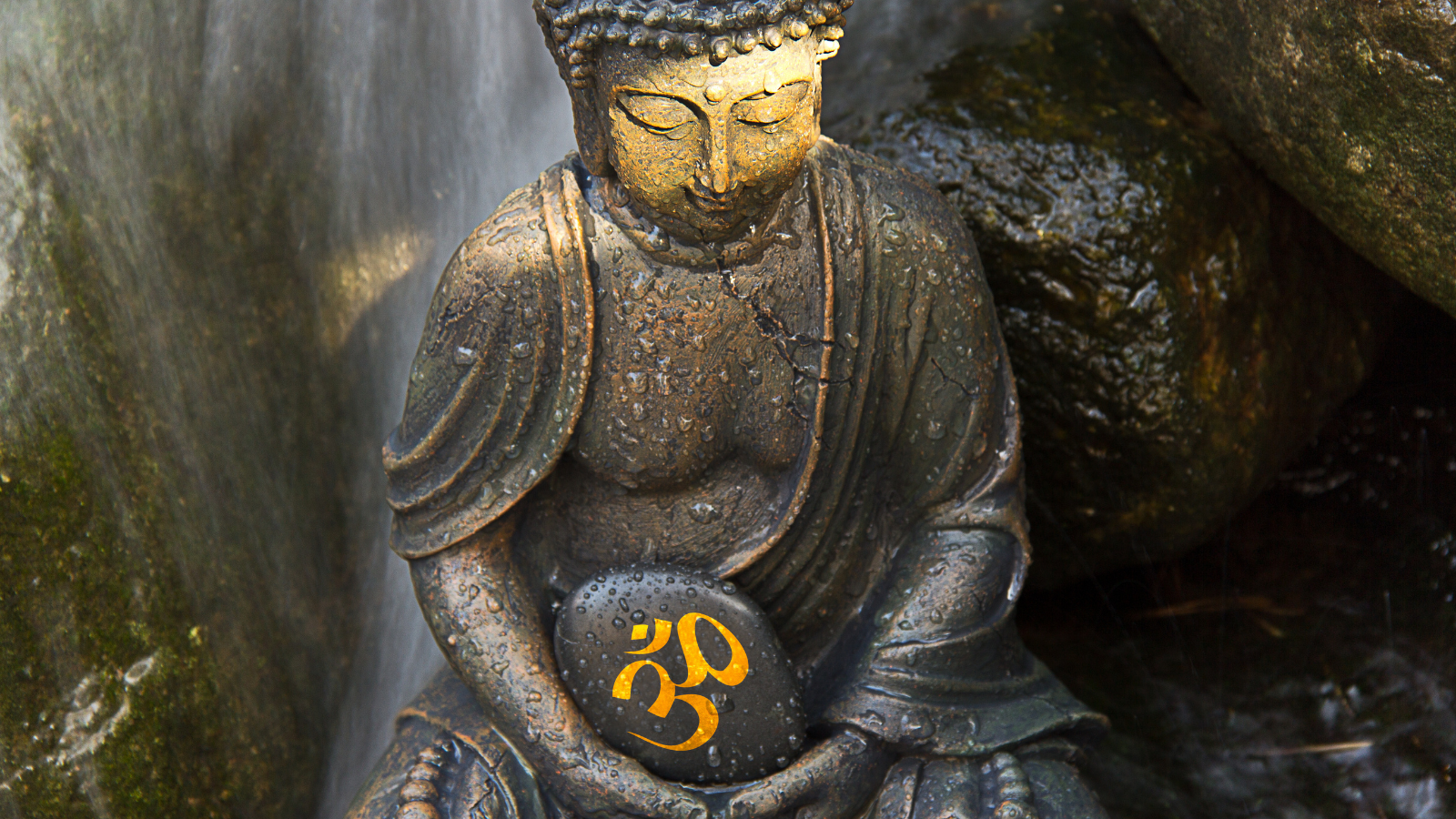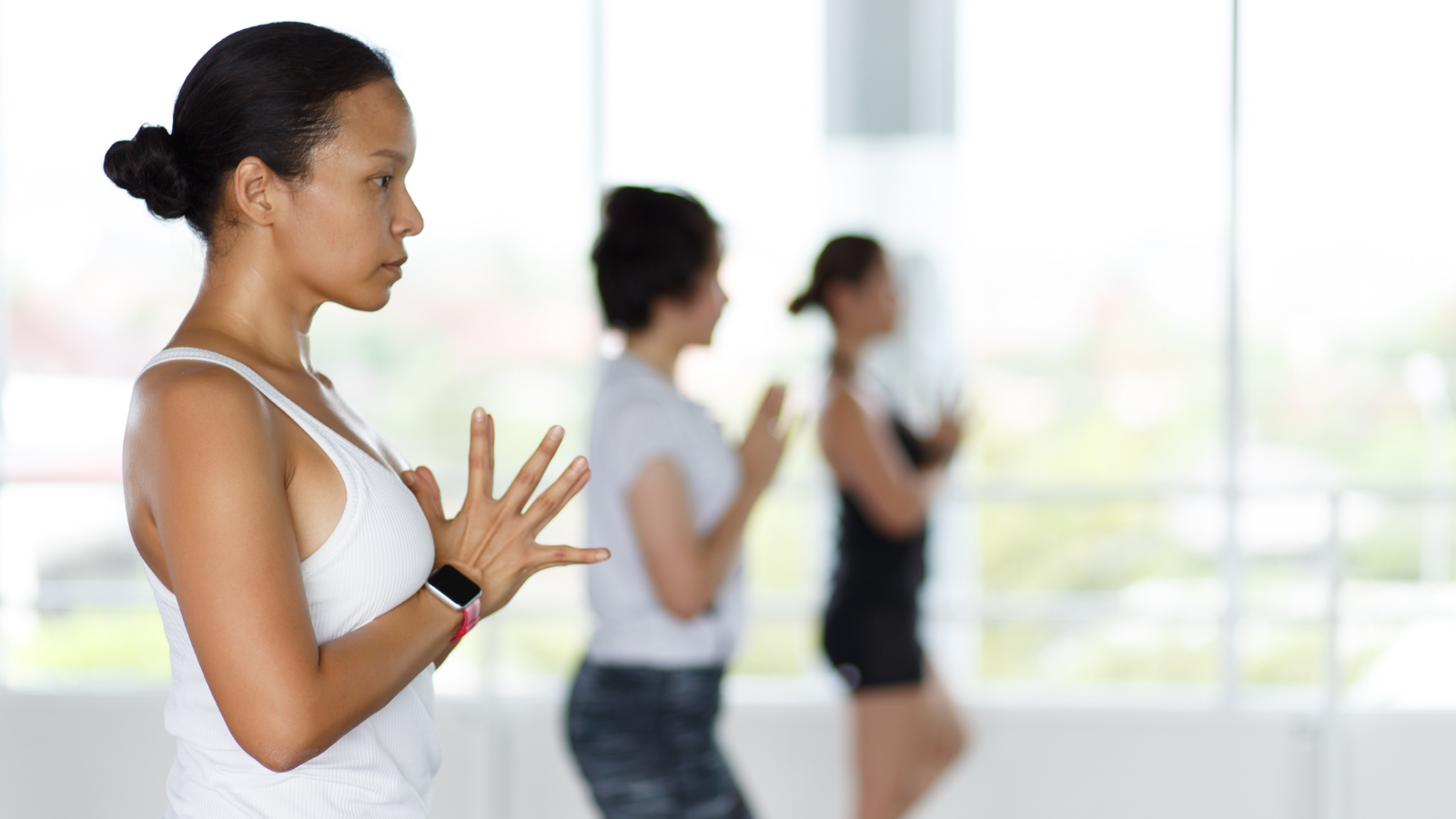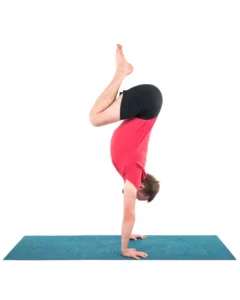English or Sanskrit Pose Names?

Article At A Glance
Like everything in yoga culture, there are many opinions about how to name yoga poses. Teachers with a more traditional bent often prefer Sanskrit pose names. Newer teachers often prefer English names. Still, other teachers instruct people into poses, only rarely using the names at all. Which is best? Well, like pretty much everything else in yoga culture, it depends.
Many yoga teachers calculate that using English or Sanskrit will be most beneficial for their particular cross-section of students. Others, like myself, have mostly stuck with the way I learned the pose names. Since all my early teachers used Sanskrit pose names, that’s how I learned to teach.
When I was certified as an Iyengar teacher in 1989, part of the assessment process was to be able to perform 50 different poses from their Sanskrit names. So that’s how I’ve mostly taught—when I use pose names at all. (I mostly instruct people through the process of moving into and out of poses, rather than using the names.)
Using Sanskrit Pose Names Is Not the Same as Speaking Sanskrit
Still, using Sanskrit pose names doesn’t necessarily mean that I’m actually speaking Sanskrit. In fact, I’m certain that I pretty much mangle the pronunciation of the Sanskrit names I use. That, in itself, means that I’m not aligned with the spirit of the language. Only scholars of Sanskrit can truly do it justice.
Sanskrit is a sacred Indian language that was originally taught only to the elite, scholarly classes. There are 52 letters in the Sanskrit alphabet, all of which are meant to be pronounced in a specific way in order to create a specific vibration. Each word in the language combines specific sounds to create the actual vibration of the concept to which it refers. So, in other words, when we pronounce Sanskrit pose names using Western dialects, the words do not carry the power they would if they were pronounced as they were intended.
So I will never claim to be “speaking Sanskrit” when I use Sanskrit pose names. However, I prefer using these names, partly because that’s how I originally learned, but also because I love languages. I studied Latin and Spanish in high school and majored in Italian at Indiana University. I loved learning about grammar and the Latin roots of English and Italian words. Some English words have Sanskrit roots (also shared with Latin). When we recognize these roots in pose names, understanding and remembering Sanskrit names becomes easier.

Are there advantages to using Sanskrit pose names? If you’re a scholar of Sanskrit and know how to pronounce the words correctly, absolutely. But most of us aren’t. So it’s really a personal preference. Is your student population open to hearing Sanskrit names? If you know them, then why not use them?
Why Use English Pose Names?
Whether you choose to use English or Sanskrit pose names depends largely on your teaching environment. For example, if you’re teaching a noon-hour class in a gym, English names probably work better. The populations who attend gym yoga classes are likely there for a physical workout. Most are unlikely to be interested in trying to decipher Sanskrit pose names. If you’re teaching a transient population, maybe in a correctional facility, where students are only there for the short term, English is probably a better choice. If you teach children, the English animal-related pose names, in particular, can be fun for kids to imagine while they practice asana.

English or Sanskrit? Choose Satya
In either case, it mostly comes down to personal choice. Some advocates of English or Sanskrit—especially in the often-snarky online world—have tended to criticize those who have chosen differently. Sanskrit advocates accuse English advocates of watering down yoga. English advocates accuse Sanskrit advocates of elitism. (Fortunately, those of us who rarely use names at all have been spared such criticisms.)
The most important factor in choosing how to name your asanas is to consider Satya (truthfulness). If you like the sound of Sanskrit and you enjoy dipping your toe into the stream of another language—even if it’s just on the shallow end—use it. If you aren’t especially attracted to using Sanskrit and like the English names’ imagery, that should be your choice. Teach from whatever allows you to come from your most authentic self.
Also, read...
The Yoga Sutras: Practicing Non-Attachment without Becoming Detached
The Broomstick Effect: The #1 Key to Perfecting Balancing Yoga Postures
Related courses
Breath as Medicine: Yogic Breathing for Vital Aging
Yoga and Myofascial Release: Releasing Chronic Tension with the Bodymind Ballwork Method
Yoga and Detoxification: Tips for Stimulating Lymphatic Health

Charlotte Bell began practicing yoga in 1982 and began teaching in 1986. She was certified by B.K.S. Iyengar in 1989 following a trip to Pune. In 1986, she began practicing Insight Meditation with her mentors Pujari and Abhilasha Keays. Her asana classes blend mindfulness with physical movement. Charlotte writes a column for Catalyst Magazine and serves as editor for Yoga U Online. She is the author of two books: Mindful Yoga, Mindful Life, and Yoga for Meditators, both published by Rodmell Press. She also edits Hugger Mugger Yoga Products’ blog and is a founding board member for GreenTREE Yoga, a non-profit that brings yoga to underserved populations. A lifelong musician, she plays oboe and English horn in the Salt Lake Symphony and the folk sextet Red Rock Rondo whose 2010 PBS music special won two Emmys.



